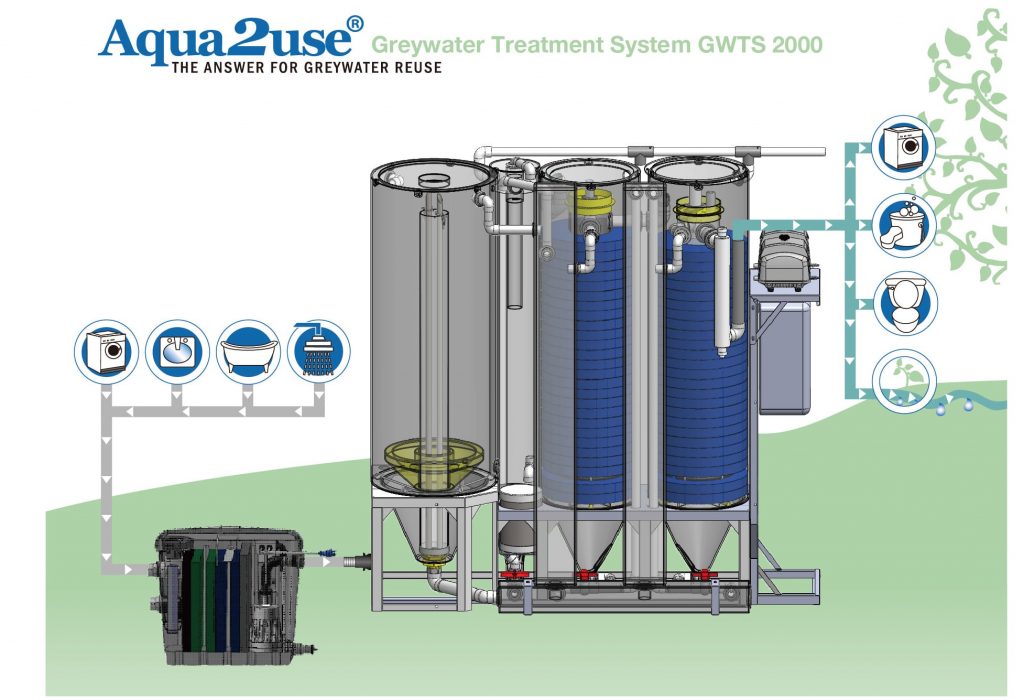Have you ever wondered what happens to the water that goes down your drain after taking a shower or washing dishes? Most people don’t give it much thought, but there is a way to make better use of this water. Greywater recycling is the process of reusing household wastewater for irrigation purposes, reducing water waste and conserving our precious resources.
In this DIY-style post, we will guide you through the steps of setting up a greywater recycling system on your rural property. Whether you are living off-grid or simply want to reduce your environmental impact, this project can be both beneficial and rewarding.
Step 1: Assess Your Water Usage
Before diving into greywater recycling, it’s essential to understand your water usage patterns. Take note of how much water is used in each room of your house – bathrooms, kitchen, laundry room – as well as how often these activities occur. This information will help determine the size and design of your greywater system.
Step 2: Identify Suitable Greywater Sources
Not all wastewater generated in your home is suitable for reuse. Greywater refers to relatively clean household wastewater from sources such as sinks, showers, bathtubs, and washing machines. It does not include toilet waste (known as blackwater) or heavily contaminated water from dishwashers or chemical cleaning processes.
Step 3: Designing Your Greywater System
Now that you know where your greywater comes from let’s move on to designing an effective system for its reuse. There are two primary types of systems:
1. Branched Drain System: The simplest and most common type involves diverting greywater directly from its source (such as a bathroom sink) into an outdoor garden bed with mulch-filled trenches or perforated pipes buried underground. The plants then absorb the nutrients present in the greywater while purifying it naturally.
2. Constructed Wetland System: This more complex system involves creating small ponds or wetland areas where the greywater is filtered and treated by plants before being used for irrigation. This system requires adequate space and a good understanding of wetland design principles.
Step 4: Gathering Materials
Now that you have chosen your greywater system design, it’s time to gather the necessary materials. Here are some essential components:
– Diversion device: Depending on the type of system, you may need a simple diverter valve or a more sophisticated pump and filtration setup.
– Pipes and fittings: PVC or polyethylene pipes, along with connectors and valves, will be needed to transport the water from its source to the garden area.
– Mulch or gravel: For branched drain systems, mulch-filled trenches or gravel beds are vital for distributing water evenly throughout the garden.
– Plants: Choose hardy plants that can tolerate occasional moisture fluctuations since greywater availability may vary depending on your household usage.
Step 5: Installation
Once you have all the materials ready, it’s time to install your greywater recycling system. Start by diverting or collecting greywater from each source using appropriate plumbing techniques. Ensure that no cross-contamination occurs between greywater and potable water supplies.
For branched drain systems:
1. Dig trenches in your garden bed following a gentle slope away from your house.
2. Line the trenches with landscape fabric to prevent soil clogging.
3. Fill them with mulch or gravel as per your design specifications.
4. Connect each source of greywater using pipes and fittings while ensuring proper drainage into the trench system.
For constructed wetland systems:
1. Create shallow ponds or depressions in an area away from human contact.
2. Line these areas with pond liners if necessary to prevent leakage into groundwater sources.
3. Plant suitable species around these ponds, ensuring they can handle both dry spells and excess moisture.
Step 6: Maintenance
Regular maintenance is crucial for keeping your greywater system running smoothly. Here are some essential maintenance tasks:
– Regularly check for clogs or blockages in the pipes and clean them if necessary.
– Monitor water distribution to ensure even watering throughout the garden.
– Periodically inspect and adjust plants, especially in constructed wetland systems, removing any overgrown vegetation.
– Avoid using harsh chemicals or toxic substances that could harm the plants or soil biology.
Step 7: Safety Precautions
While greywater recycling is a sustainable practice, it’s important to follow a few safety guidelines:
1. Use only biodegradable and environmentally friendly cleaning products to minimize impacts on plants and soil health.
2. Keep children and pets away from direct contact with untreated greywater.
3. Do not use greywater on edible crops that may come into contact with human consumption unless appropriate treatment measures are in place.
By implementing a greywater recycling system on your property, you can significantly reduce your water footprint while nourishing your garden at the same time. It’s a win-win situation for both you and the environment.
Remember, before starting any DIY project like this, it’s always recommended to consult local regulations or obtain necessary permits if required. Enjoy creating your own eco-friendly oasis!


Leave a comment